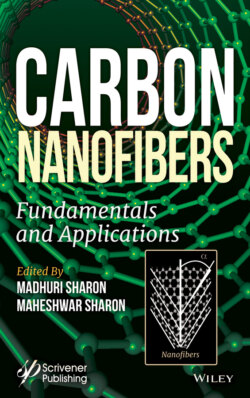Читать книгу Carbon Nanofibers - Группа авторов - Страница 33
1.3.6 Mechanism of CNF Synthesis
ОглавлениеThere are different mechanisms suggested to explain the role of catalyst but none of them can explain why CNFs are formed over the entire reaction tube in a larger amount than the amount of catalyst used for the purpose. The author of this chapter suggests that vapor of precursor at high temperature breaks down into lower very reactive carbon fragments and this decomposition is catalyzed by the catalyst. These reactive fragments move around the furnace (Figure 1.8A2) with the help of the carrier gas. Since these fragments are highly reactive, they recombine to give CNF. The process of recombination giving the product depends upon the variable conditions used for the synthesis of CNF. The nature of CNF formed thus depends upon variables like temperature, the flow rate of carrier gas, etc. It is for this reason one finds deposition of CNF not only in the boat (Figure 1.8B2) but throughout the quartz tube (Figure 1.8C). Moreover, the amount of CNF formed are far in excess of the amount of catalyst used for the purpose.
Figure 1.9 (a) typical sketch of CVD unit with a spray system and (b) the aligned carbon nanofibers produced from this process using turpentine oil.
